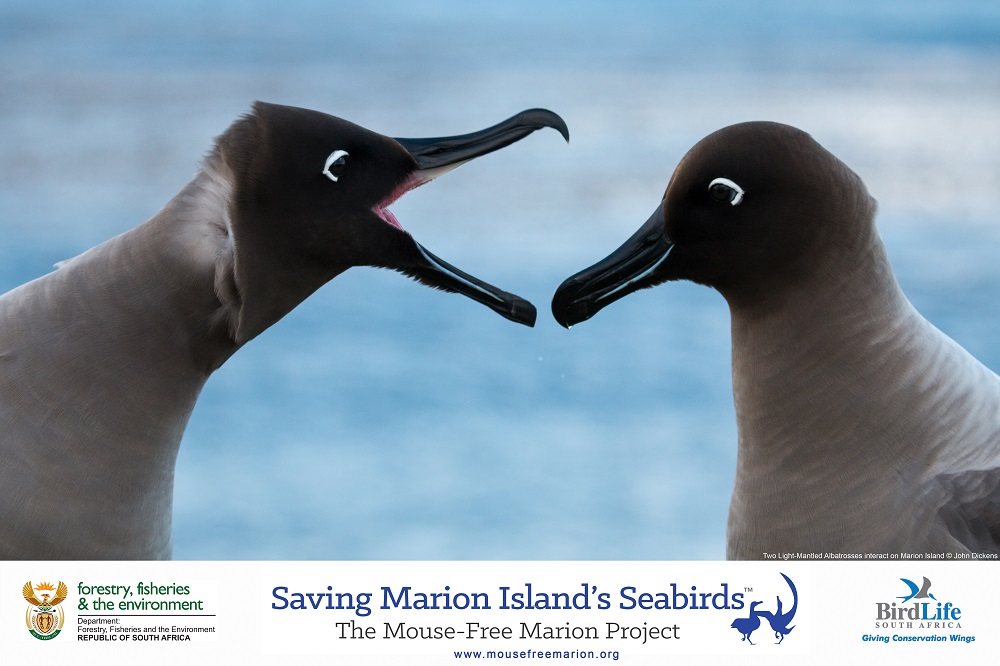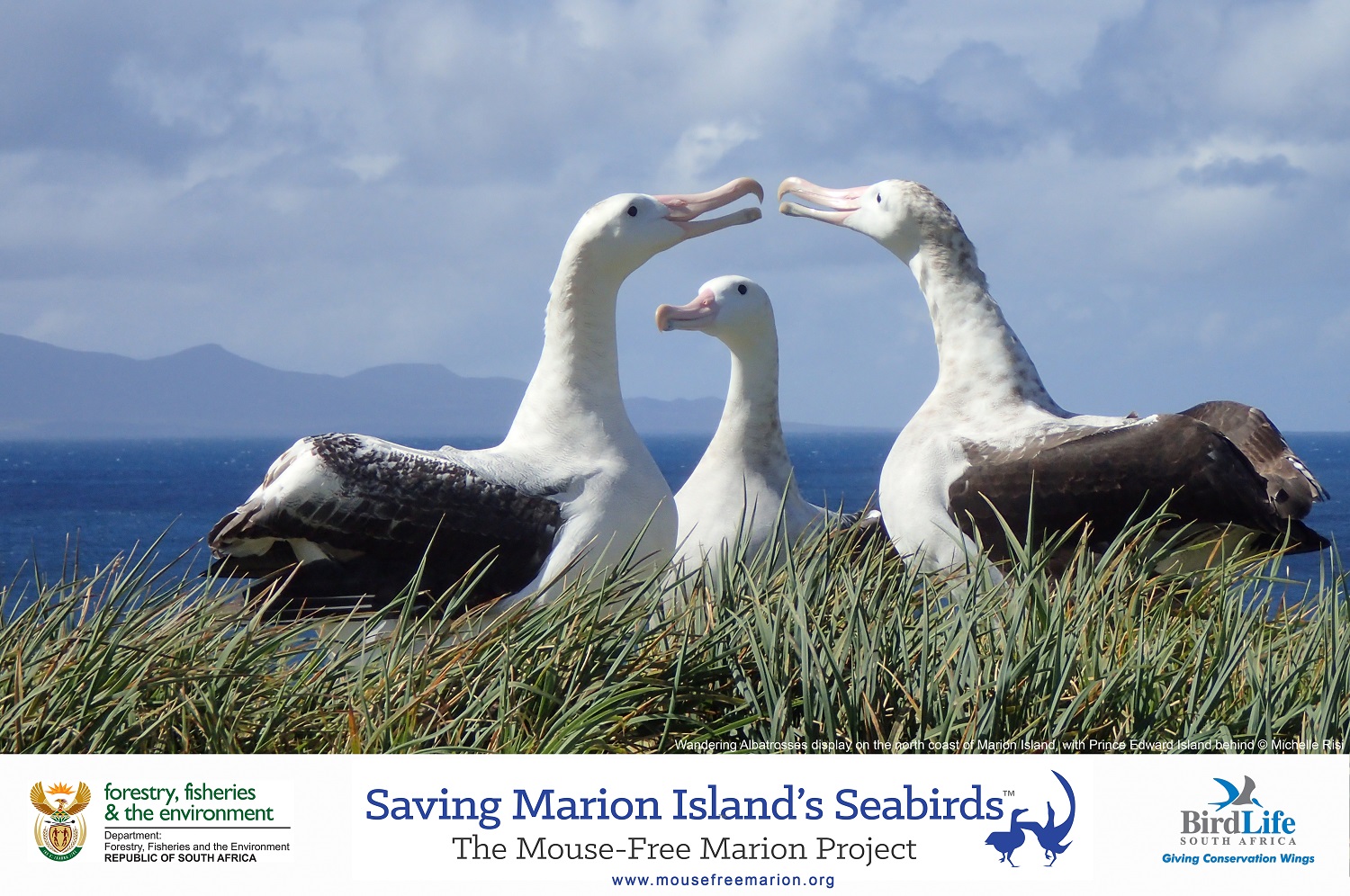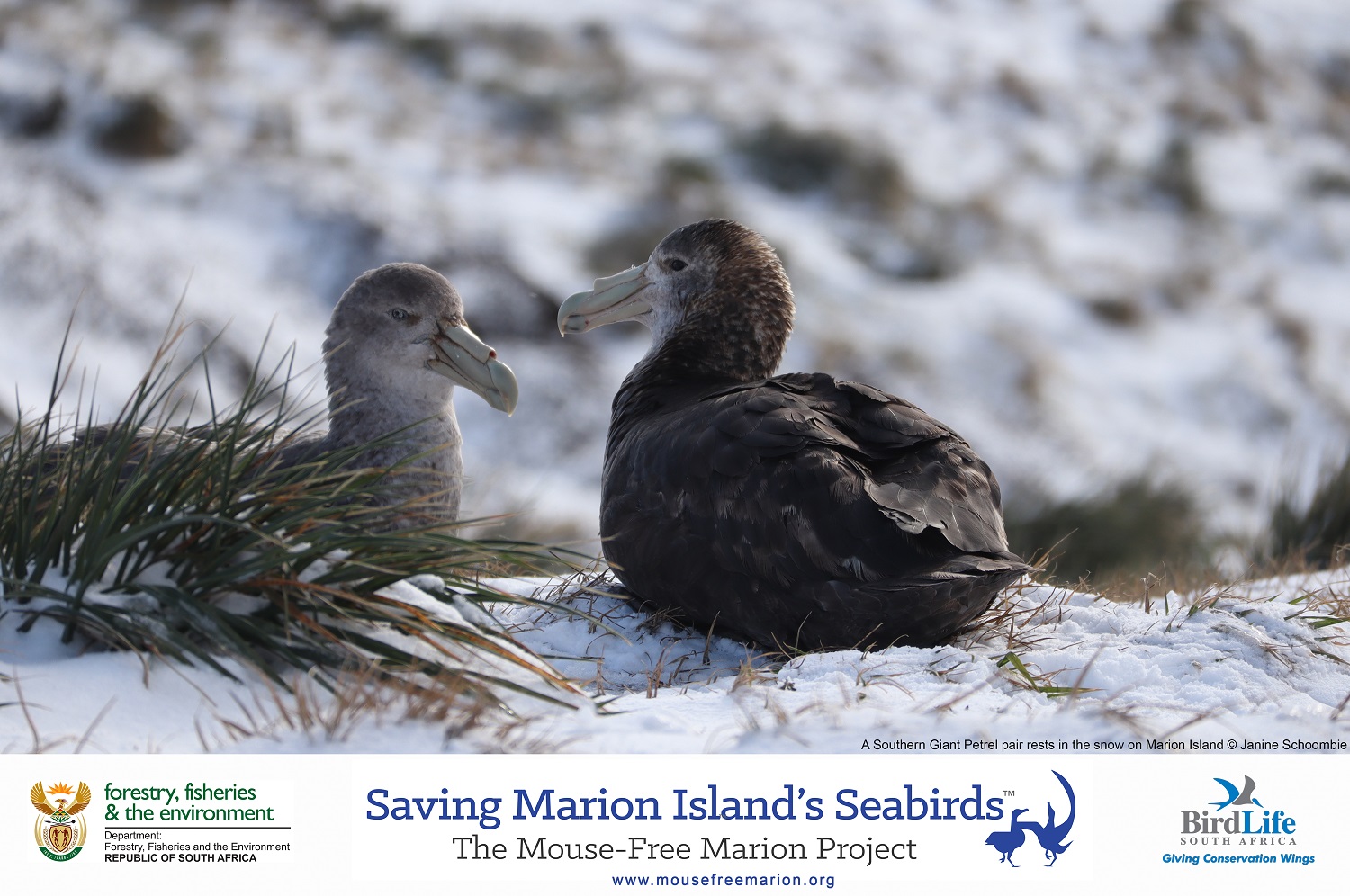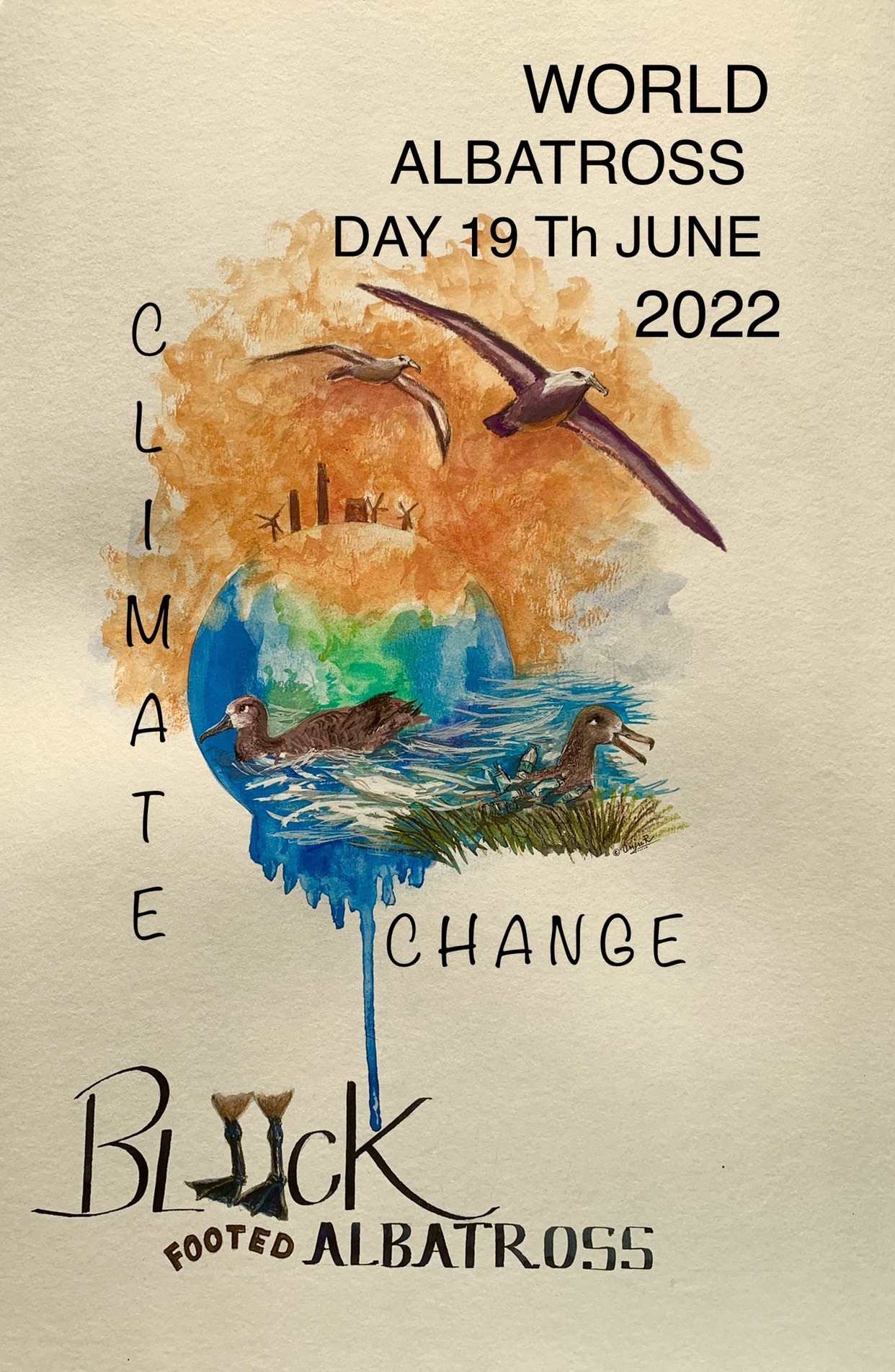
Artwork for WAD2022 by ABUN artist Anju Rajesh
For the third year running the Albatross and Petrel Agreement has collaborated with Artists and Biologists Unite for Nature (ABUN) to produce artworks to help raise awareness of World Albatross Day in the cause of the conservation of ACAP-listed albatrosses, petrels and shearwaters.
ACAP has chosen “Climate Change” to be its theme for the third World Albatross Day, to be celebrated on 19 June 2022. This follows the inaugural theme “Eradicating Island Pests” in 2020 and “Ensuring Albatross-friendly Fisheries” last year (click here). The featured species chosen for 2022 are two of the three species of albatrosses that breed in the North Pacific: the Black-footed Phoebastria nigripes and the Laysan P. immutabilis. Both these Near Threatened albatrosses have most of their breeding populations on the low-lying atolls of the USA’s North-western Hawaiian Islands. There they are at risk from sea-level rise and increases in the number and severity of storms that result in flooding, both considered a consequence of climate change.
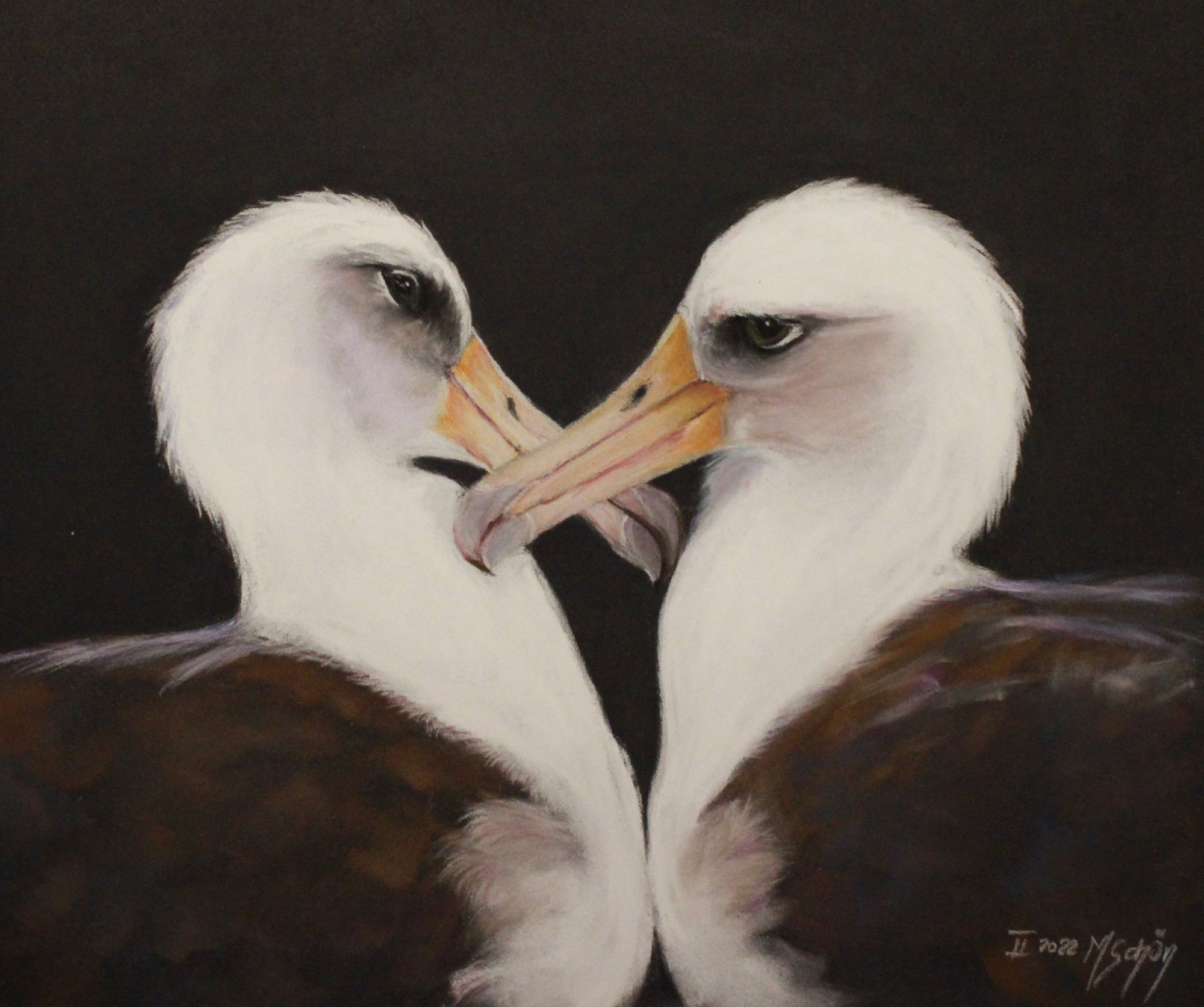
“My Heart is Yours”, A Laysan Albatross pair by Marion Schön, after a photograph by Hob Osterlund
ABUN’s 39th Project has concentrated on producing artworks depicting these two Northern Pacific albatrosses over the extended period of January to March. Now the project is ended, save for a few last, promised artworks, ACAP is both proud and grateful to announce that no less than 93 new paintings and drawings by ABUN artists are available for the Agreement to use to illustrate its news posts and in other products. All these artworks can be viewed in a photo album on ACAP’s Facebook page.
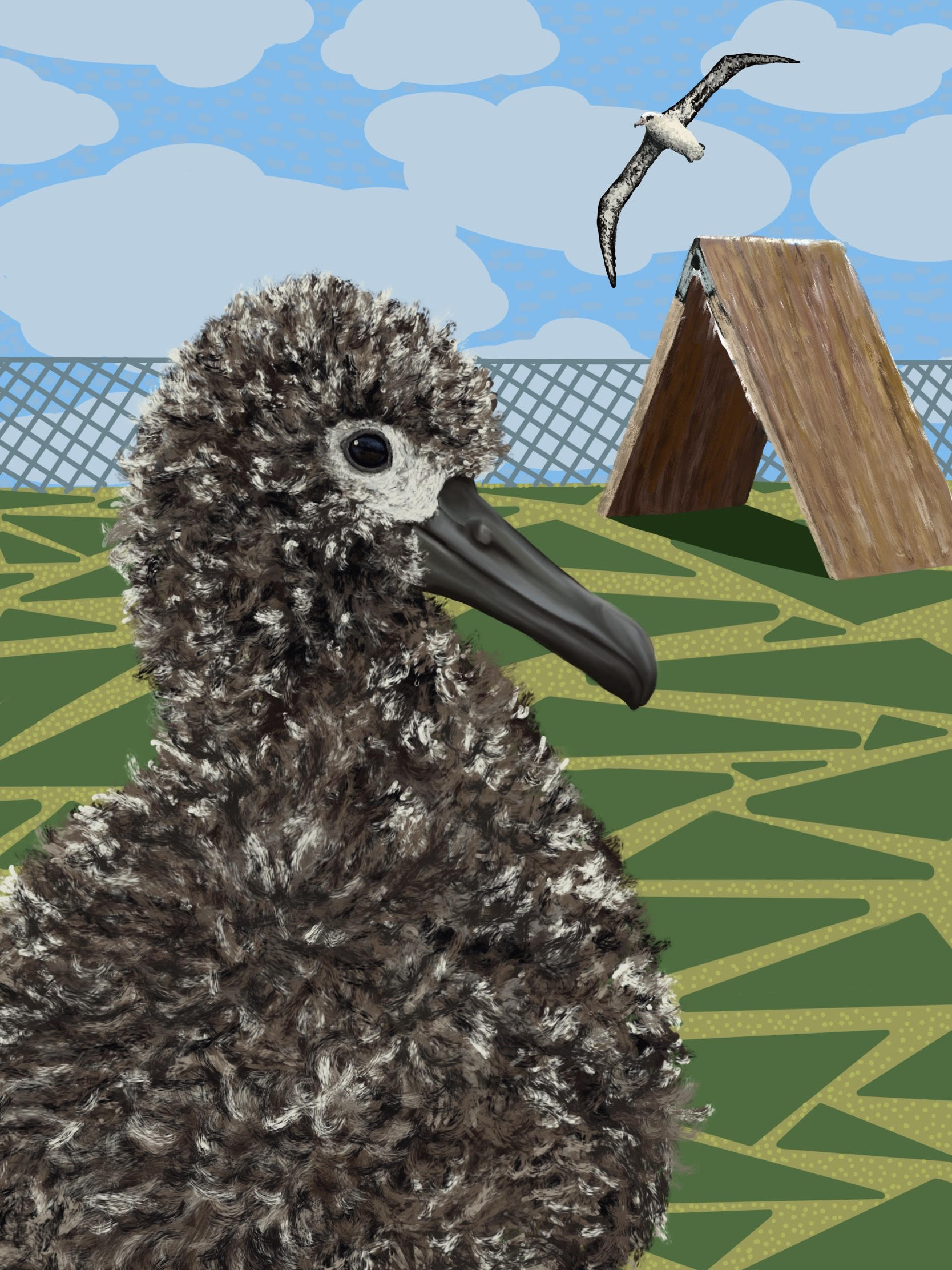
Combating sea-level rise: a translocated Laysan Albatross chick in Hawaii’s James Campbell National Wildlife Refuge, by Ilana Nimz
Two of the participating ABUN artists, Flávia Barreto from Brazil and Grisselle Chock in the USA, and their artworks have been featured in ACAP Latest News; it is planned to feature more artists and their 2022 art during the build up to ‘WAD2022’ on 19 June. Also to follow soon are a music video and a collage poster based on Project #39. Further, eight of the 90-odd artworks have been chosen (a hard task!) to be turned into freely downloadable posters to match the 12 WAD2022 photo posters already available on this website.
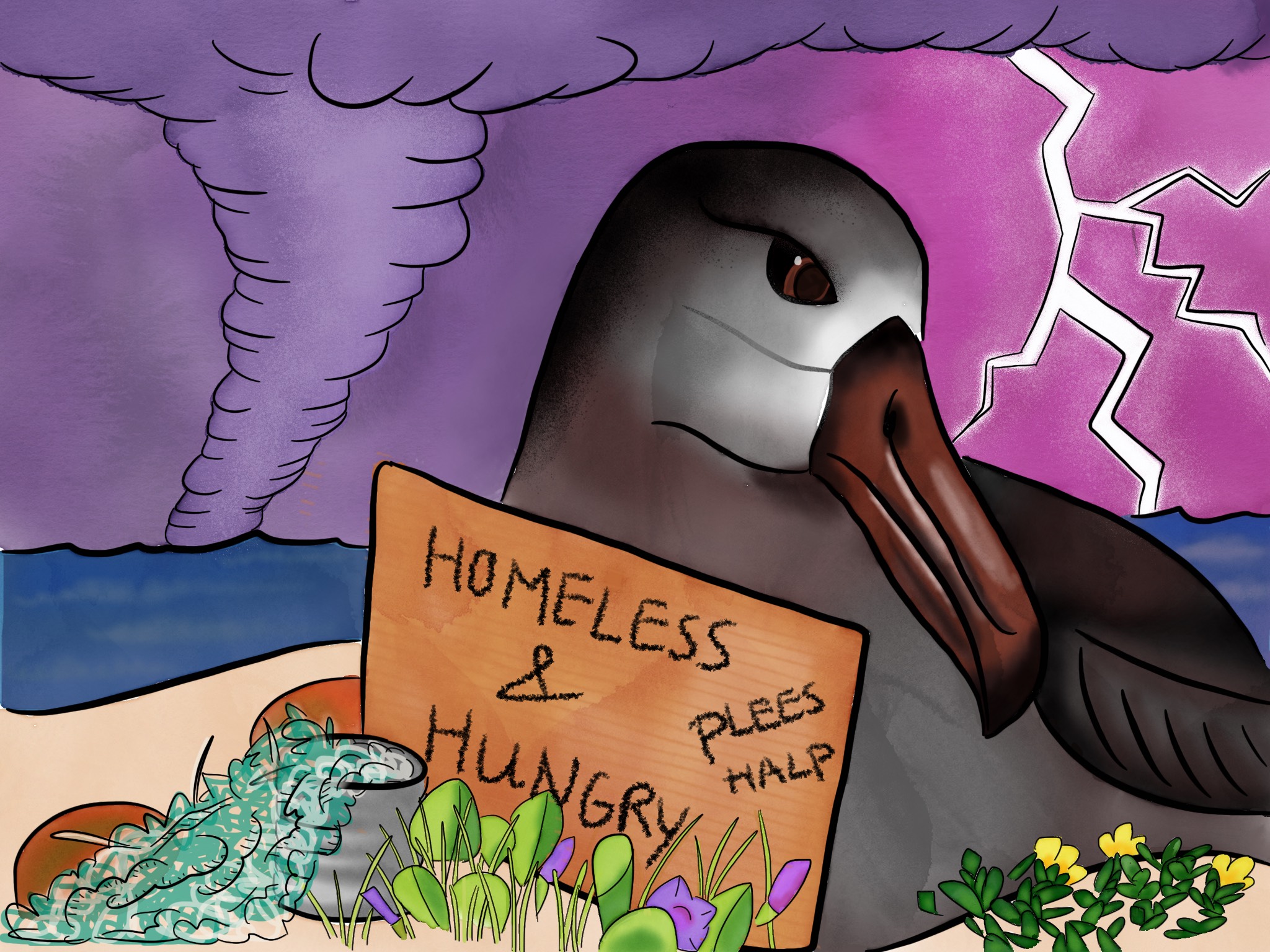
A ”Homeless & Hungry” Black-footed Albatross bemoans looming climate change, digital artwork by Grace Innemmee
The three years of working with ABUN has resulted in over 520 artworks featuring all 31 ACAP-listed species being available for ACAP to use; these will last for many years ahead. They surely must be a unique collection for any intergovernmental conservation body to have at its disposal. Chapeau, ABUN!
With grateful thanks to Kitty Harvill, Marion Schön and all the contributing ABUN artists, as well as to the photographers whose pictures offered inspiration.
John Cooper, ACAP Information Officer, 11 April 2022

 English
English  Français
Français  Español
Español 

